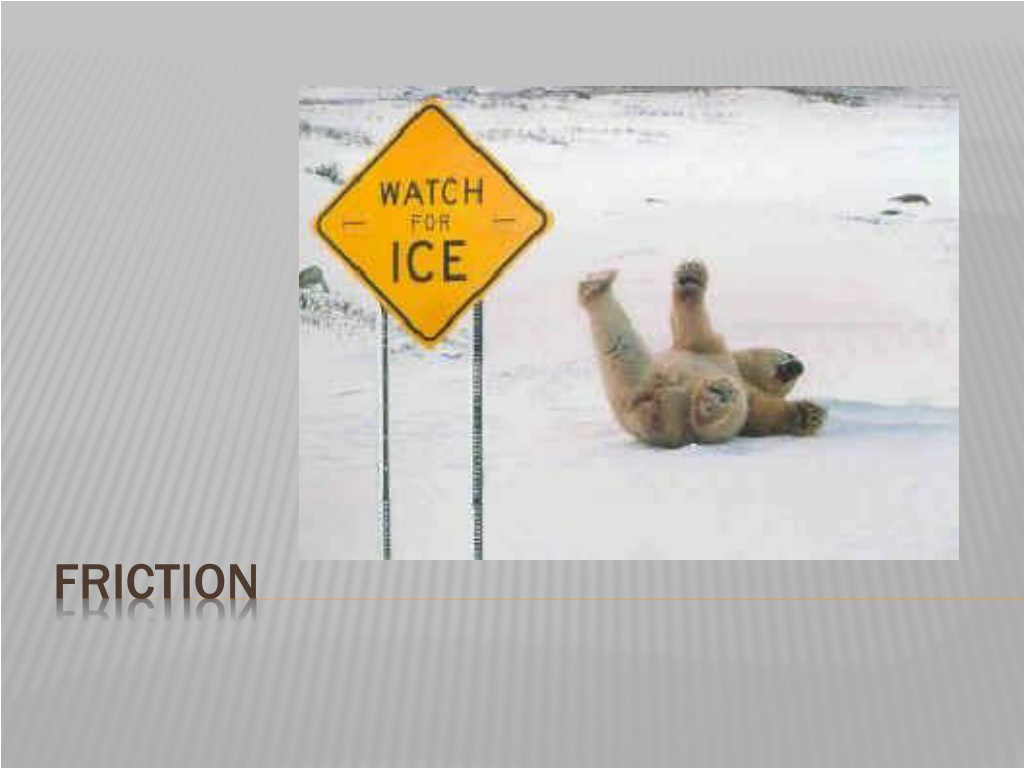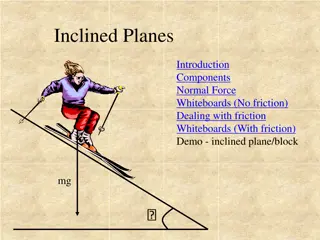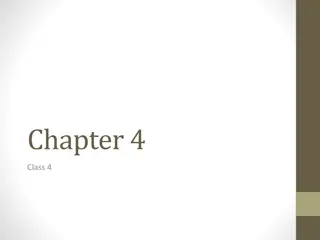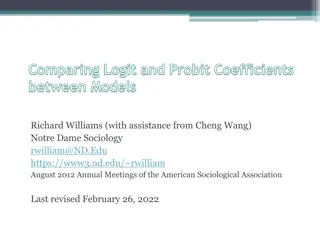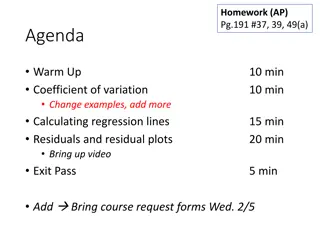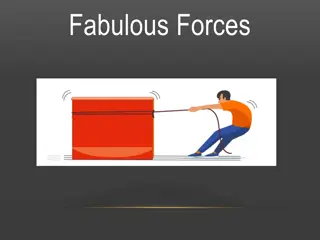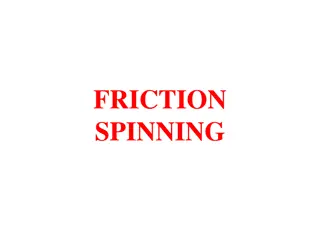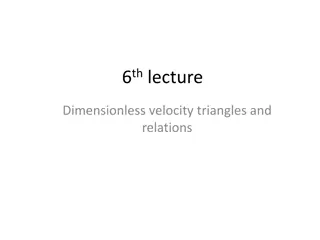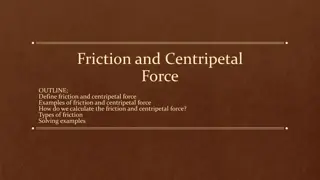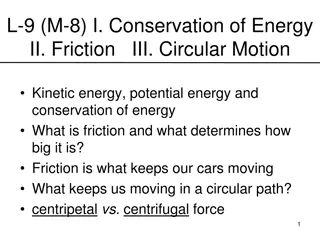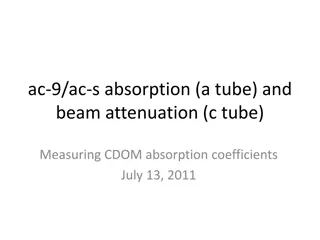Friction: Basics and Coefficients Explained
Friction is a force that opposes motion, influenced by surface texture and normal force. The coefficient of friction varies for objects at rest versus in motion. Learn about static and kinetic friction, key concepts, and how to solve friction problems step by step.
Download Presentation

Please find below an Image/Link to download the presentation.
The content on the website is provided AS IS for your information and personal use only. It may not be sold, licensed, or shared on other websites without obtaining consent from the author.If you encounter any issues during the download, it is possible that the publisher has removed the file from their server.
You are allowed to download the files provided on this website for personal or commercial use, subject to the condition that they are used lawfully. All files are the property of their respective owners.
The content on the website is provided AS IS for your information and personal use only. It may not be sold, licensed, or shared on other websites without obtaining consent from the author.
E N D
Presentation Transcript
WHAT DO YOU REMEMBER ABOUT FRICTION? Friction opposes motion Friction is dependent on the texture of the surfaces Friction is dependent on normal force motion friction
WHAT DO YOU REMEMBER ABOUT FRICTION? Friction opposes motion Friction is dependent on the texture of the surfaces Friction is dependent on normal force Ffr = Fn is called coefficient of friction has no units depends on characteristics of both surfaces Higher = rougher surface / more friction motion Note: Friction does NOT depend on the surface area of contact friction
The coefficient of friction is different for when an object is at rest and when it is moving. s = coefficient of static friction (object at rest) k = coefficient of kinetic friction (object moving) Static friction is greater than kinetic friction - its harder to start an object moving than it is to keep it moving. surface-on-surface hook velcro-on-fuzzy velcro avg tire-on-dry pavement grooved tire-on-wet pavement smooth tire-on-wet pavement metal-on-metal (lubricated) steel-on-ice steel-on-Teflon s k >6.0 0.9 0.8 0.5 0.1 0.1 0.05 >5.9 0.8 0.7 0.4 0.05 0.05 0.05
FRICTION PROBLEMS WE DO A 28 kg crate initially at rest on a horizontal floor requires a 75 N horizontal force to set it in motion. Find the coefficient of static friction between the crate and the floor. What do we do first?
FRICTION PROBLEMS WE DO A 28 kg crate initially at rest on a horizontal floor requires a 75 N horizontal force to set it in motion. Find the coefficient of static friction between the crate and the floor. Remember our strategy: Draw a free body diagram Identify all variables Identify relevant equations Solve! Check your work! 1) 2) 3) 4) 5)
FRICTION PROBLEMS WE DO A 28 kg crate initially at rest on a horizontal floor requires a 75 N horizontal force to set it in motion. Find the coefficient of static friction between the crate and the floor. s = 0.27
FRICTION PROBLEMS WE DO A force of 40.0 N accelerates a 5.0-kg block at 6.0 m/s2 along a horizontal surface. a. How large is the frictional force? b. What is the coefficient of friction?
FRICTION PROBLEMS WE DO A force of 40.0 N accelerates a 5.0-kg block at 6.0 m/s2 along a horizontal surface. a. How large is the frictional force? b. What is the coefficient of friction? Ff = 10 N k = 0.2
FRICTION PROBLEMS WE DO 2) A 12 kg suitcase is pushed with a force of 38 N to the left. If the coefficient of kinetic friction between the suitcase and the floor is 0.3, how far will the suitcase move after 5 sec? 2.8 m
FRICTION PROBLEMS YOU DO FOLLOW THE STEPS! Make a plan before you plug in numbers! Be able to explain your reasoning! 1) A 30 kg crate requires a 53 N force to keep it moving at 1 m/s. Find the coefficient of kinetic friction. k = 0.18 2) You need to move a 105-kg sofa to a different location in the room. It takes a 403-N force to start the sofa moving. What is the coefficient of static friction between the sofa and the carpet?
Elevator problem Question: How does the weight of a person in an elevator depend on the motion of that elevator? What will the scale show if the elevator is 1. at rest or moving with constant speed 2. speeding up 3. slowing down Newton s 3. law: Force with which the person acts on the scale (reading of the scale) is equal to the normal force on the person. So, if we find normal force we know the reading of the scale, so called APPARENT WEIGHT
Lets assume that elevator is moving upward, and let this be positive direction. 1. draw free body diagram 2. apply Newton s 2. law : Fnet = ma Fn + 1. elevator is at rest or moving with constant speed Fn mg = ma = 0 Fn = mg apparent weight = weight mg Fn 2. elevator is speeding up: a is positive Fn mg = ma Fn = mg + ma apparent weight > weight the scale would show more, and you would feel heavier mg Fn 3. elevator is slowing down: a is negative Fn mg = - ma Fn = mg - ma apparent weight < weight the scale would show less, and you would feel lighter mg
YOU DO You are riding in an elevator holding a spring scale with a 1kg mass suspended from it. You look at the scale and see that it reads 9.3 N. What, if anything, can you conclude about the elevator s motion at that time?
EXIT TICKET 1) Solve the elevator problem for an elevator traveling downward. YOU MUST EXPLAIN YOUR REASONING USING NEWTON S 2nd LAW 2) Write down 2 things you learned friction problems.
